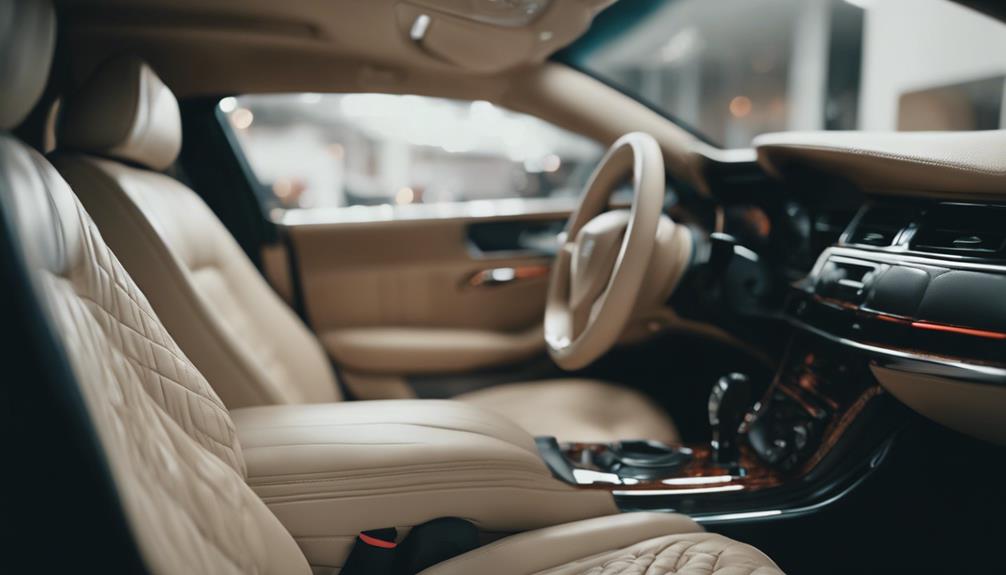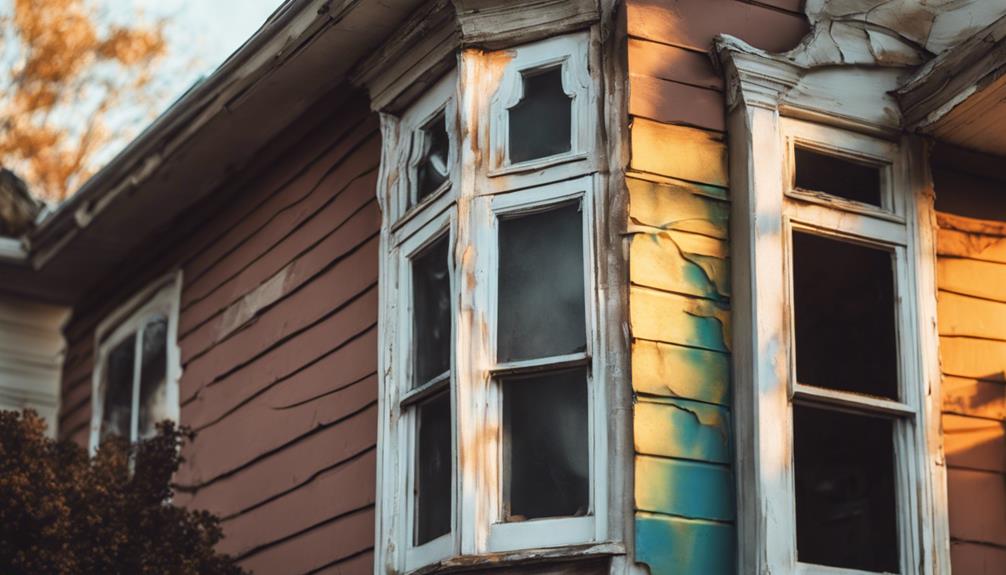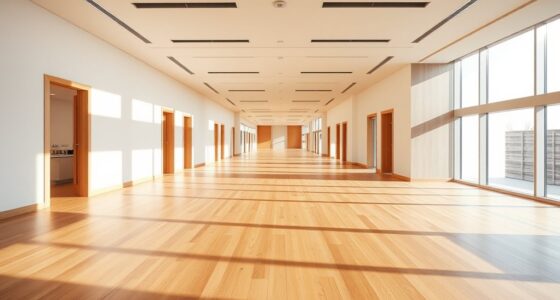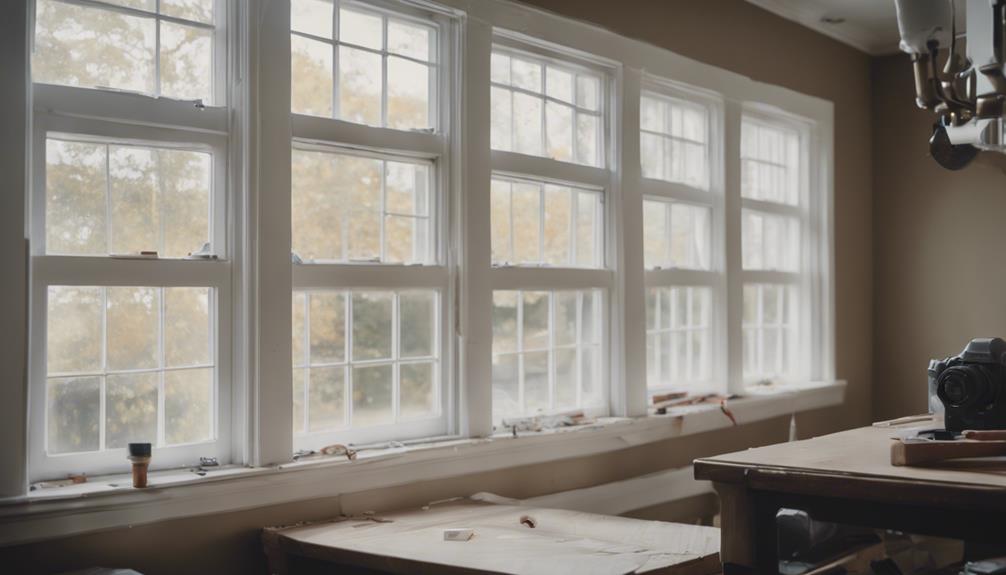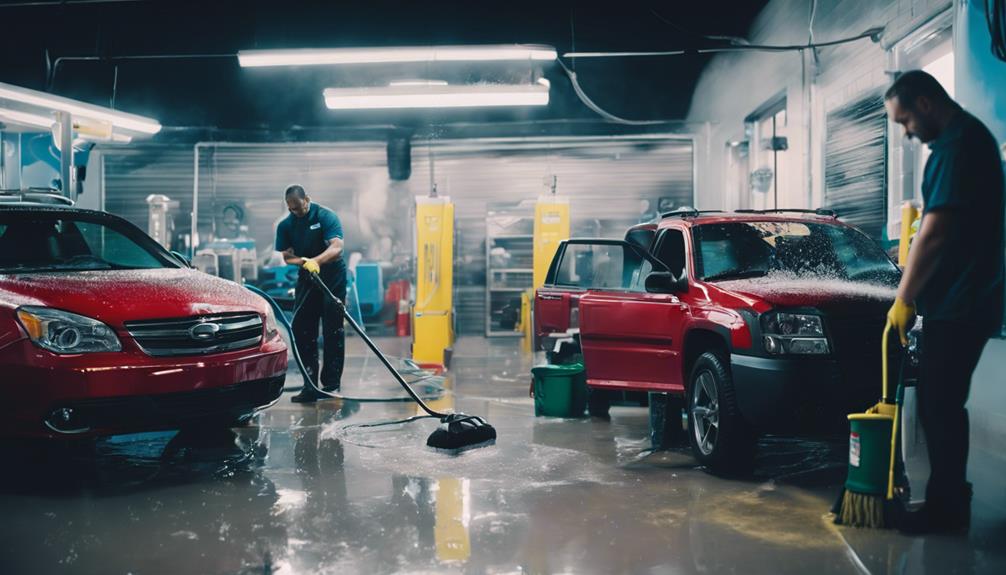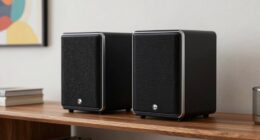Are you looking to give your car’s interior a refresh? Visit Vive Detailing for top-notch interior shampooing services! They specialize in thorough fabric cleaning using eco-friendly dry-steam for a hygienic driving experience. In addition, they offer customized treatments for luxury car brands to ensure your vehicle looks and feels fantastic. With options available for various vehicle sizes and additional services like leather repair and odor elimination, Vive Detailing has everything you need. Say goodbye to dirt and grime, and say hello to a fresh, clean car interior today! Explore their comprehensive detailing solutions for a pristine driving experience.
Key Takeaways
- Vive Detailing offers professional interior shampooing services for all vehicle sizes.
- Specialized treatments cater to luxury car brands with deep fabric cleaning.
- Eco-friendly dry-steam sanitization at 212°F for effective germ elimination.
- Additional services include leather repair, spot stain removal, and odor removal.
- DrivePur Protection System available for tough odor and smoke residue elimination.
Vive Detailing: Top Choice for Shampooing
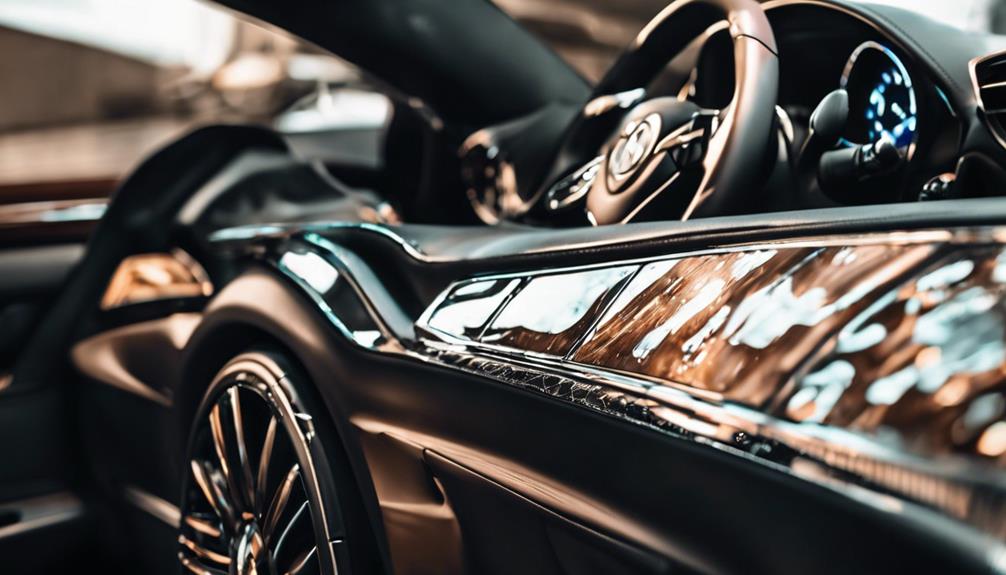
When it comes to shampooing your car interior, Vive Detailing stands out as the top choice for premium detailing services. Their interior detail services go beyond a simple clean – they offer a thorough clean that restores your car to its former glory. Using a pneumatic driven system for debris removal and eco-friendly steam for sanitization, Vive Detailing guarantees that every nook and cranny of your car is meticulously cleaned.
The deep clean provided by Vive Detailing is unparalleled, catering to all vehicle types and providing extensive solutions for interior cleaning and restoration. From spot stain removal to leather repair, they've you covered. Their specialized services even include hair removal, ensuring that your luxury car, whether it's a Bentley, Ferrari, or Rolls Royce, receives the utmost attention.
Deep Fabric Cleaning Services Available

When it comes to deep fabric cleaning services for your car interior, you can expect excellent benefits and professional techniques. Our pneumatic driven system efficiently removes debris, while our 212°F foam generator guarantees thorough cleaning of your fabrics.
With our eco-friendly 212°F Euro dry-steam method, your vehicle's interior receives effective sanitization, providing a luxury treatment for your car.
Fabric Shampoo Benefits
Invest in professional fabric shampooing services to experience the deep cleaning benefits that revitalize your car's interior, ensuring a fresh and hygienic driving environment. Interior detailing through fabric shampooing effectively removes embedded dirt, stains, and odors, extending the lifespan of your car upholstery.
This deep cleaning not only enhances the appearance of your vehicle but also eliminates allergens, bacteria, and germs, creating a healthier space for you and your passengers. Suitable for all fabric materials, fabric shampooing provides a thorough and safe cleaning process without causing damage.
Professional Cleaning Techniques
For a thorough and effective deep fabric cleaning service, consider utilizing pneumatic driven systems and 212 ° F foam generators. When it comes to professional cleaning techniques for your car's interior, hot water plays an important role in achieving a deep clean. Here are some benefits of these specialized services:
- Pneumatic driven systems guarantee effective debris removal.
- 212 ° F foam generators deeply clean fabric surfaces.
- Eco-friendly 212 ° F Euro dry-steam sanitizes your car's interior.
- Specialized treatments are available for luxury car brands like Bentley, Ferrari, and Rolls Royce.
Eco-Friendly Dry-Steam Sanitization Offered
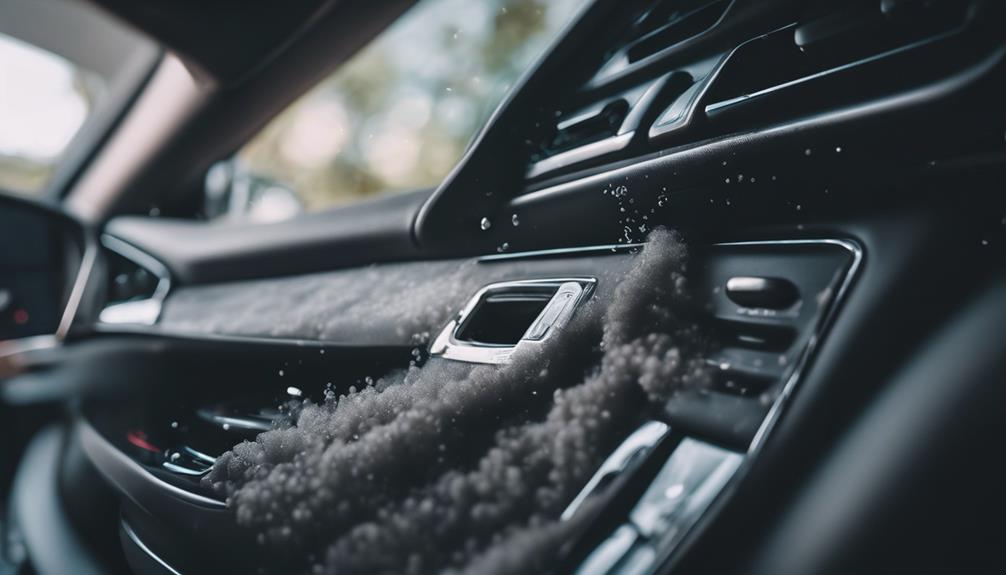
When it comes to sanitizing your car interior, consider the benefits of eco-friendly dry-steam cleaning.
This specialized process not only deep cleans your fabrics but also helps to eliminate germs and bacteria effectively.
Steam Cleaning Benefits
Experience the benefits of eco-friendly dry-steam sanitization at 212°F for thorough debris removal and deep fabric cleaning in your car interior.
- Steam cleaning effectively removes dirt and bacteria without harsh chemicals.
- The pneumatic driven system guarantees thorough debris removal from every nook and cranny.
- Luxury car brands like Bentley, Ferrari, and Rolls Royce trust this method for its advanced cleaning capabilities.
- Complimentary wash and wax service is included with a simple Facebook check-in, adding extra value to the service.
Eco-Friendly Sanitization Process
Have you considered the benefits of our eco-friendly dry-steam sanitization process for deep fabric cleaning and sanitization in your car interior? Our process utilizes 212°F Euro dry-steam, ensuring a thorough clean while being environmentally friendly.
Luxury car brands like Bentley, Ferrari, Lamborghini, Porsche, and Rolls Royce prefer this method for its effectiveness. Additionally, we offer a complimentary Wash & Wax service when you check-in on Facebook, adding extra value to your visit.
For specialized needs, we provide services like hair removal starting at $39, leather repair starting at $139, and spot stain removal starting at $39.
Our premium interior detailing services include a pneumatic-driven system for debris removal and eco-friendly dry-steam sanitization, guaranteeing a pristine interior for your vehicle.
Special Treatments for Luxury Cars
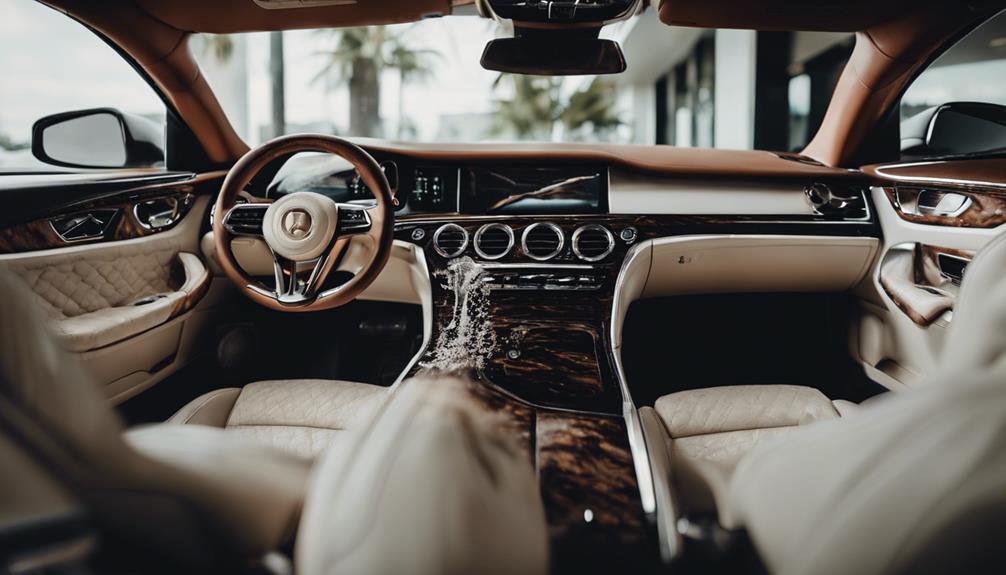
Specializing in premium interior detailing services, luxury car brands like Bentley, Ferrari, Lamborghini, Porsche, and Rolls Royce receive specialized treatments including pneumatic debris removal, 212 °F foam fabric cleaning, and eco-friendly 212 °F Euro dry-steam sanitization. When it comes to luxury cars, the attention to detail is paramount. Here are some of the exclusive treatments these high-end vehicles can enjoy:
- Pneumatic debris removal for a thorough cleaning experience.
- 212 °F foam fabric cleaning to guarantee a pristine interior.
- Eco-friendly 212 °F Euro dry-steam sanitization for a deep and environmentally friendly cleanse.
- Complimentary Wash & Wax offered with Facebook check-in to keep your luxury car looking its best.
These exceptional services cater to the discerning needs of luxury car owners, making sure that their vehicles not only look stunning but also maintain a high level of cleanliness and hygiene. Treat your luxury car to the pampering it deserves with these specialized treatments designed to elevate your driving experience.
Options for Different Vehicle Sizes

When considering options for different vehicle sizes, pricing for interior shampooing services varies depending on the size of the vehicle. For small vehicles like sedans, you can expect to pay between $200 and $240 for a thorough interior cleaning. If you have a medium-sized vehicle such as an SUV, the cost may range from $220 to $280 to have your interior shampooed. Larger vehicles like trucks or vans usually require a budget of $260 to $340 for thorough shampooing services. If you're looking to have your seats shampooed, prices typically start at $32 per seat, depending on the size and condition of your vehicle.
Additionally, floor mat shampooing is available as an add-on service for an extra cost. This service usually starts at $6 per mat. Taking care of your vehicle's interior, including seats and floor mats, not only enhances the overall look but also helps maintain the value of your car. Choose the service that best fits your vehicle size and needs to keep your car's interior fresh and clean.
Add-On Services for Enhanced Care
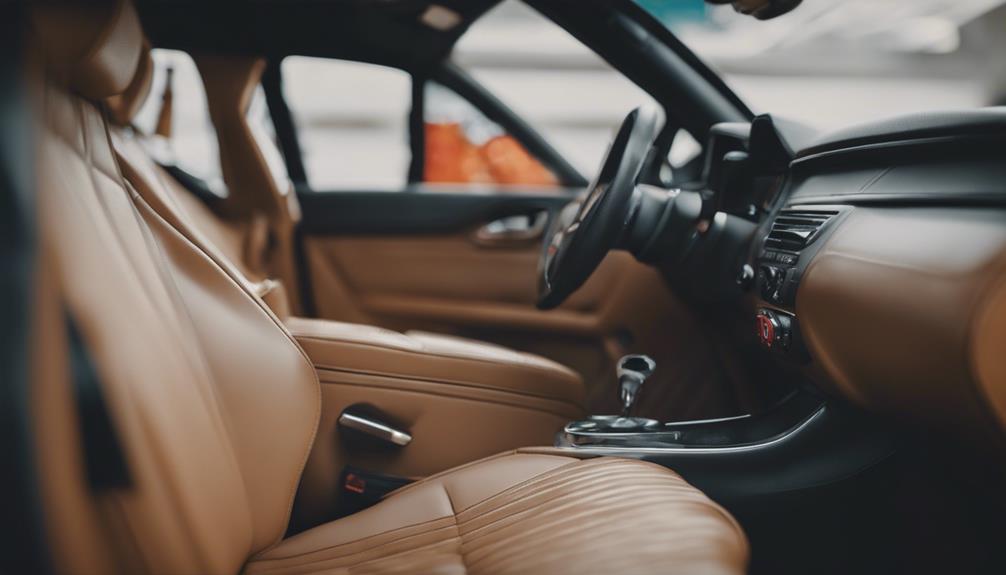
To enhance the care of your vehicle's interior, explore the range of add-on services available that cater to specialized needs and preferences. When getting your car interior shampooed, there are several additional services that can elevate the cleanliness and comfort of your vehicle. Here are some options to explore:
- Leather Repair: Starting at $139, this service can address any damages to your leather seats, ensuring a pristine look and feel.
- Spot Stain Removal: Starting at $39, this service targets specific stains on your upholstery, carpets, or mats, leaving them spotless.
- Hair Removal Service: Starting at $39, this service effectively eliminates any stubborn hair strands from your car's interior surfaces.
- Wheel Polishing: Starting at $25, this service adds a polished finish to your wheels, enhancing the overall appearance of your vehicle.
These add-on services can complement your interior shampooing session, providing a complete cleaning and maintenance package for your car.
Smoke and Odor Removal Services
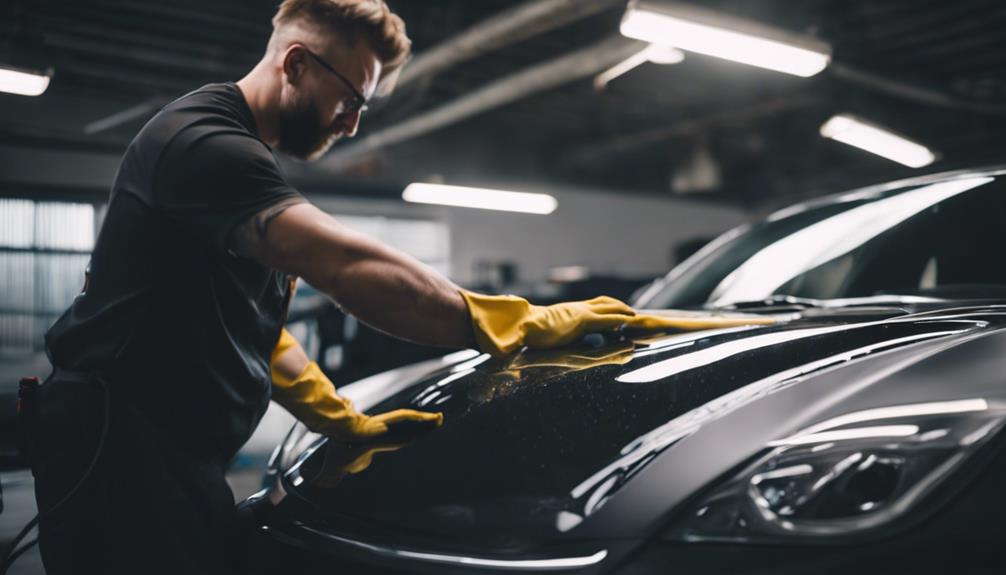
For effective smoke and odor removal services, consider utilizing the DrivePur Protection System and T102 Titanium Dioxide. These methods are highly effective in eliminating tough odors and smoke residue from your car interior without the use of harsh chemicals.
The DrivePur Protection System works by releasing natural agents that break down odor-causing molecules, leaving your car smelling fresh and clean.
T102 Titanium Dioxide is a powerful photocatalyst that helps to neutralize odors and purify the air inside your vehicle.
Leather Repair Expertise Available
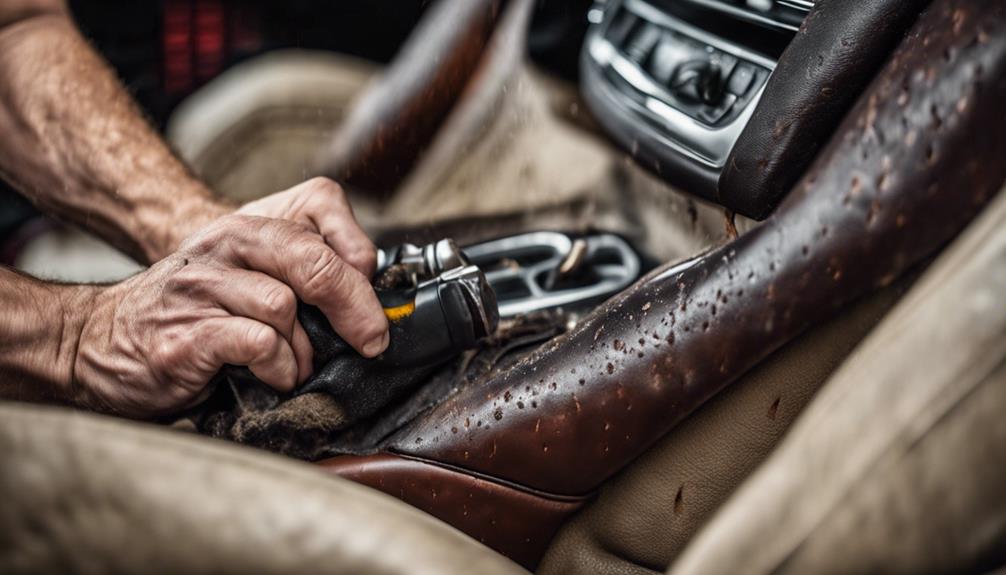
Expert technicians offer specialized leather repair services starting at $139, catering to luxury car brands such as Bentley, Ferrari, Lamborghini, Porsche, and Rolls Royce. When it comes to leather repair expertise, these professionals go above and beyond to make sure your luxury vehicle's interior looks as good as new.
Here's what you can expect from their detailing services:
- Utilization of Specialized Techniques: Expert technicians utilize specialized methods for dyeing, repair processes, conditioning, and protection cream application.
- Complete Solutions: Complete leather repair solutions are offered for various types of damage, ensuring thorough restoration.
- Spot Stain Removal: Additional services include spot stain removal starting at $39, enhancing the overall interior detailing experience.
- Enhanced Environment: By using the DrivePur Protection System and T102 Titanium Dioxide, effective smoke and odor removal is achieved, providing a fresh and clean interior environment.
With their attention to detail and expertise in leather repair, your luxury vehicle will receive the care and restoration it deserves.
Comprehensive Interior Detailing Solutions
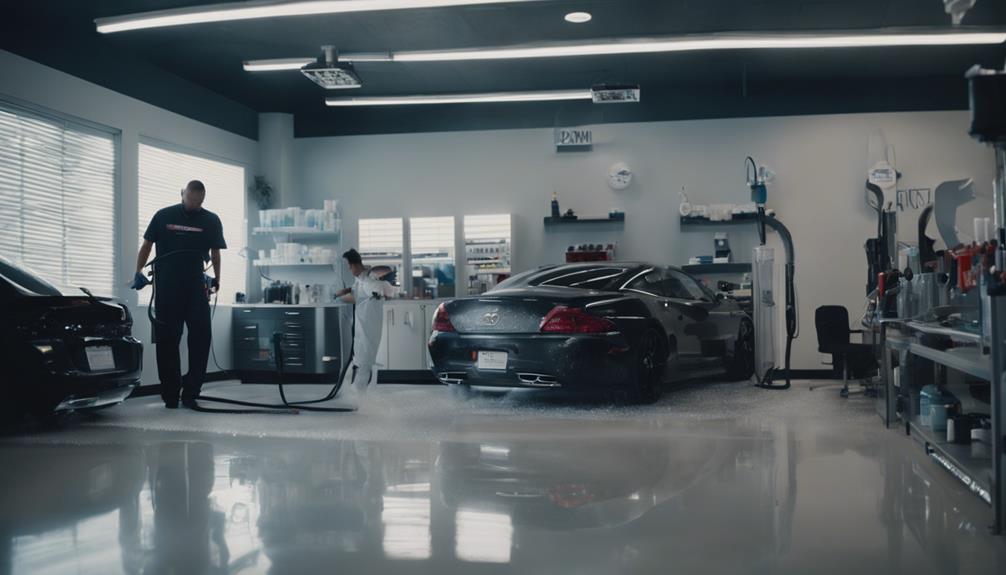
When detailing your car's interior, guarantee a thorough clean by including shampooing seats, carpets, and floor mats in the process. Our all-encompassing interior detailing service goes beyond the surface to guarantee a deep clean using specialized equipment and professional-grade cleaners. Tough stains are no match for our steam sanitization process, reaching 212°F for eco-friendly and effective results, perfect for luxury car brands like Bentley, Ferrari, and Rolls Royce. Check out the table below for a summary of our all-encompassing interior detailing solutions:
| Detailing Services | Description | Benefits |
|---|---|---|
| Shampooing Seats | Deep fabric cleaning and stain removal using specialized equipment. | Enhances overall cleanliness and comfort. |
| Shampooing Carpets | Thorough carpet cleaning to remove dirt and grime, revitalizing the interior. | Improves air quality and aesthetics. |
| Shampooing Floor Mats | Cleaning floor mats to eliminate odors and enhance the overall look of the interior. | Extends the lifespan of floor mats. |
Our additional services like hair removal, leather repair, and spot stain removal cater to specific interior cleaning needs. Plus, don't forget to check in on Facebook for a complimentary wash and wax to elevate the value of our premium interior detailing services.
Frequently Asked Questions
How Can I Shampoo the Inside of My Car?
To shampoo the inside of your car effectively, start by removing loose items and vacuuming thoroughly. Use specialized equipment and professional cleaning products for the seats, carpet, and floor mats. Clean plastic and leather surfaces with appropriate tools.
Guarantee streak-free windows and mirrors by using the right cleaning techniques. For best results, seek professional services or follow detailed instructions to achieve a thorough interior cleaning process.
Should I Get My Car Seats Shampooed?
Getting your car seats shampooed is a smart choice!
Did you know that regular shampooing can help extend the lifespan of your car seats by keeping them clean and fresh?
Not only does it remove dirt and stains, but it also eliminates allergens and bacteria, improving the air quality in your vehicle.
How Much Is Car Detailing in Houston?
Car detailing prices in Houston vary by vehicle size. Small cars cost around $200 – $240 for interior cleaning, while medium-sized ones range from $220 – $280. Larger vehicles may need $260 – $340 for a full interior service.
Additional services like carpet or seat shampooing can add costs, starting at $6 per floor mat and $32 for seat shampooing. Specialized treatments like leather repair or odor removal come with varying prices too.
How Can I Clean My Car Interior Cheaply?
Want to spruce up your car interior on a budget? DIY solutions like vinegar or baking soda can work wonders. Grab some affordable tools like microfiber cloths and vacuum cleaners, and opt for budget-friendly cleaning products.
Online tutorials offer great tips. If you're short on time, local car wash facilities or detail shops can give your interior a thorough cleaning without breaking the bank.
Your car will thank you for the TLC!
Conclusion
Ready to give your car interior the royal treatment it deserves? Turn to Vive Detailing for all your shampooing needs.
With deep fabric cleaning, eco-friendly dry-steam sanitization, special treatments for luxury cars, and more, you'll be amazed at the transformation.
Say goodbye to smoke and odors, and hello to a fresh, like-new interior. Trust Vive Detailing for thorough and expert interior detailing solutions that will leave your car looking and feeling brand new.
